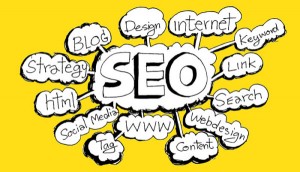Keeping an “always on” approach to CX is critical to maintain and benefit from improved customer understanding. Here’s how to get there.
Analyzing customer behaviors and monitoring competitor activities are among the top approaches B2B leaders use to identify opportunities for business growth.
Simply put: Your competitors are stalking your customers.
Recent Gartner research shows corporate leaders identify “fear of a recession” as their number one challenge to meet growth in 2023. Moreover, CEOs and other senior business stakeholders revealed that they want CMOs to renew their focus on customer acquisition, retention and engagement.
How can marketing leaders respond as both intense customer competition among brands and internal pressures pile up? “During recessions, it’s more important than ever to remember that loyal customers are the primary enduring source of cash flow and organic growth,” John Quelch and Katherine E. Jocz wrote in 2009.
The threat of recession is a real challenge for B2B CMOs. Anticipating how customer behaviors change during a significant macroeconomic shift is difficult. Marketers cannot sit on the sidelines and hope for a solution. They must take a direct and proactive strategy to align their organization around customer retention.
The latest Gartner CX Management survey identified customer retention as the best strategy to simultaneously meet internal goals and customer expectations. Here’s how to get there.
Leverage CX tools
Looking to set up your retention efforts for success? Using customer experience (CX) tools and assets (i.e., personas, journey maps and Voice of the Customer (VoC) data to understand customer needs during economic shifts is necessary.
The customer insight function within CX must identify and define the changes in customers’ markets and needs as they happen.
Focus your retention efforts in the right direction by:
- Improving customer data collection and analysis.
- Identifying and involving peers across the organization.
- Doing an inventory of existing data sources.
- Identifying your most pressing customer data needs.
- Systemizing outputs to identify gaps in delivering value to your customers across their life cycle.
- Committing to continuous listening through VoC for shifting customer expectations.
Take the following B2B manufacturing example. Customers may appreciate recommendations for product substitutions that allow them to continue operations when their preferred items are out-of-stock, more expensive or delayed.
Understanding this customer need allows the manufacturing company to provide support throughout challenging economic times and help marketing leaders improve customer perceptions and meet internal goals simultaneously.
Select best-fit metrics
Selecting the right metrics for retention strategy success adds another layer of complexity to executing CX activities during a recession. CMOs should select metrics that best support an effective customer retention strategy, such as online rating scores, loyalty program participation, sales increases, and on-time delivery.
Using the same manufacturing company example, on-time and in-full customer delivery metrics were a minor concern during the looming recession due to the frequency of their orders. As the recession set in, the manufacturing organization decreased their orders, transforming the importance of the on-time and in-full customer delivery metric since fewer total orders were being sent. Metric selection and observation of customer changes are critical to customer retention success.
(CX) patience is a virtue
Gartner research has discovered a significant increase in meeting both customer perceptions and internal goals simultaneously when organizations have customer experience initiatives in place for five or more years.
During an economic downturn, CMOs face the strong temptation to reduce or cancel CX programs when customers’ buying behavior may change. There may be pressure to shift resources from customer-facing research into advertising, the marketing tech stack or other initiatives.
But the better approach is to keep, not reduce or cut, customer experience initiatives focused on end-to-end customer insight throughout the customer journey. When you halt or reduce CX initiatives, you will quickly lose touch of changes in customer needs and expectations. Keeping an “always on” approach to CX is critical to maintain and benefit from improved customer understanding.
Insights do not equal actions. CMOs must work with the rest of the C-suite to focus commercial strategy on customer retention efforts. Put customer concerns and needs at the center through the expanded use of tools that listen, understand and improve CX.
While economic uncertainty is inevitable for all organizations, a direct, planned and monitored approach will allow B2B CMOs to be successful as economic storm clouds approach.
The post How B2B CMOs use CX to thrive amid economic uncertainty appeared first on MarTech.
MarTech(8)
Report Post






